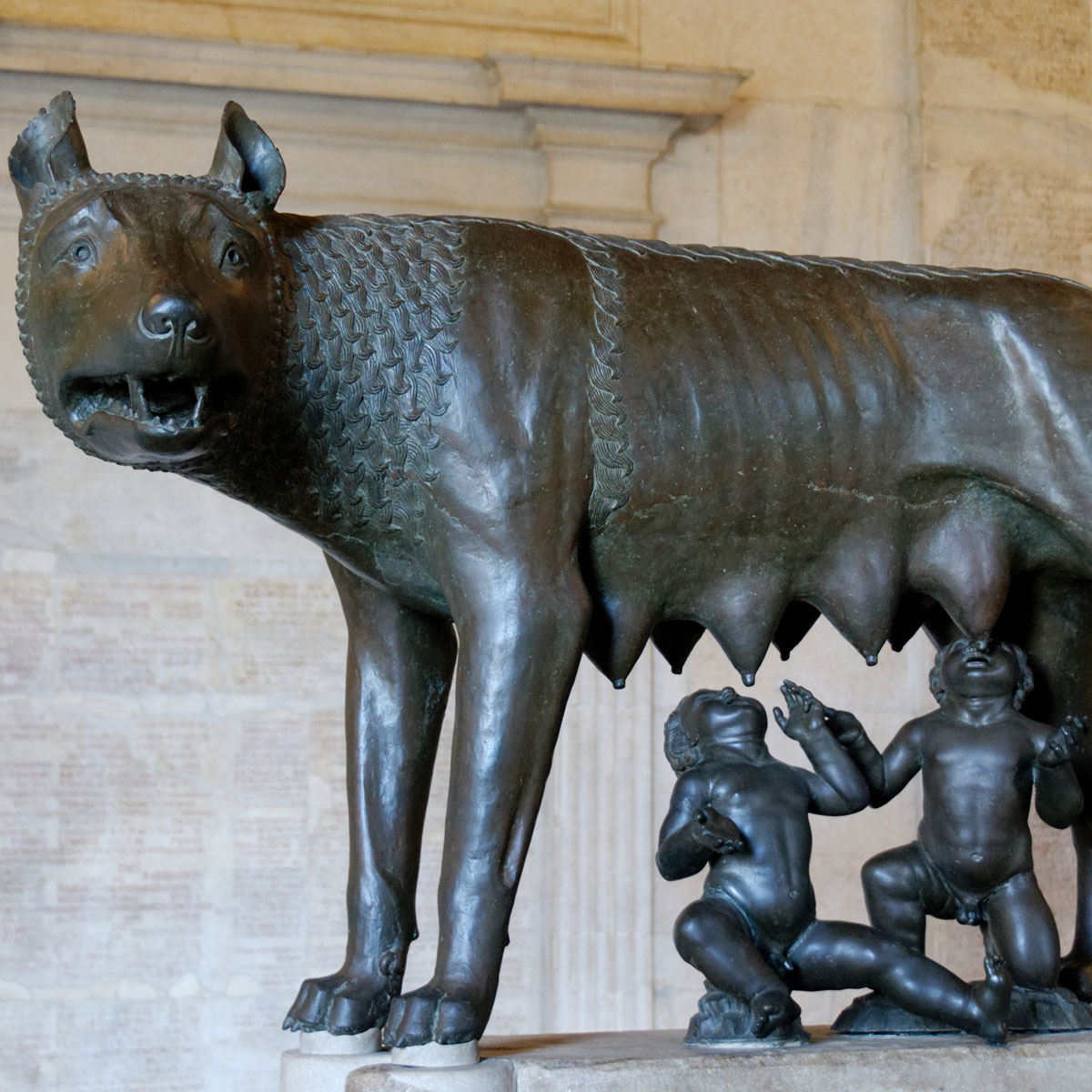If you are visiting Germany and you are passionate about art, in this article we have made a selection of the best museums in Germany so you can learn a little about them and the type of art on display before visiting them
What are the best art museums in Germany?
1- Städel Museum, Frankfurt

The Städel, officially Städelsches Kunstinstitut und Städtische Galerie, is an art museum in Frankfurt, with one of the most important collections in Germany. The Städel Museum has 3,100 paintings, 660 sculptures, more than 4,600 photographs and over 100,000 drawings and prints. It has about 4,000 m2 of exhibition space and a library of 115,000 books.

The Städel was awarded “Museum of the Year 2012” by the German association of art critics AICA in 2012. In the same year, the museum recorded its highest attendance figure ever, with 447,395 visitors. In 2020 the museum had 318,732 visitors, down 45% from 2019, due to the COVID-19 pandemic. It ranked 71st on the list of most visited art museums in 2020.
The Städel features European paintings from seven centuries, starting from the early 14th century, through the late Gothic, Renaissance, Baroque and the 19th, 20th and 21st centuries. The large collection of prints and drawings is not on permanent display and occupies the second floor of the museum. Works on paper not on display can be viewed by appointment.
The gallery has a conservation department that carries out conservation and restoration work on the collection.
2- Gallery of Old Masters Paintings, Dresden
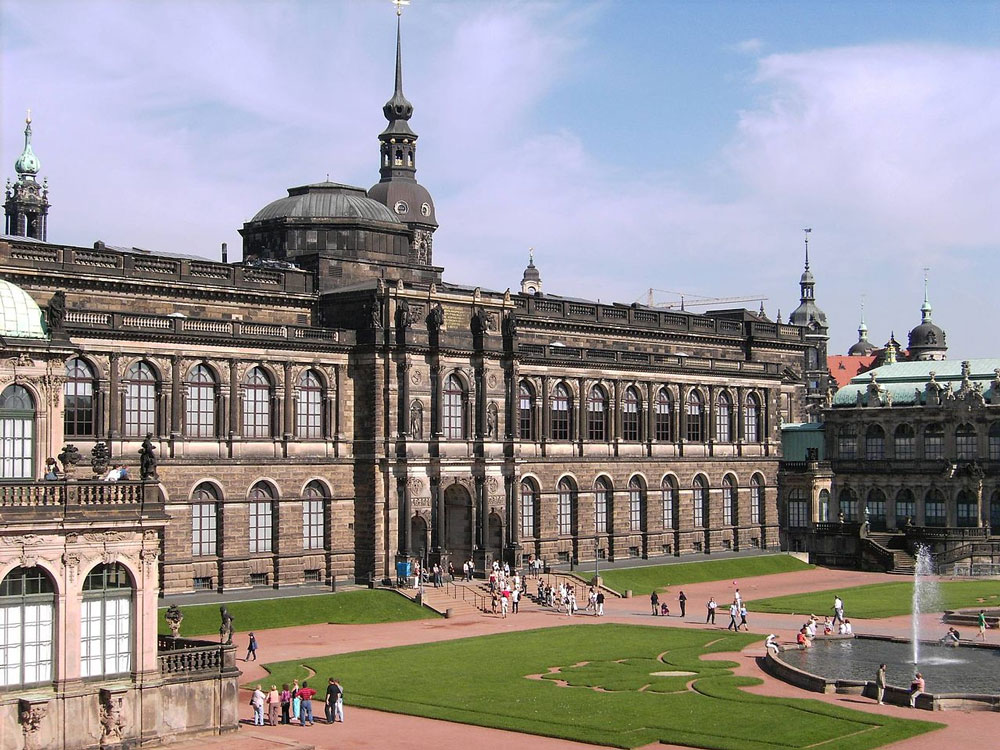
The Gemäldegalerie Alte Meister (Old Masters Gallery) in Dresden, Germany, exhibits about 750 paintings from the 15th to the 18th centuries. It includes important works from the Italian Renaissance, as well as Dutch and Flemish paintings. There are also outstanding works by German, French and Spanish painters of the period.
The Old Masters are part of the Dresden State Art Collections. The collection is housed in the Semper Gallery, the gallery wing of the Zwinger.
Some 750 paintings, 40% of the entire collection are on display in the gallery. They date from the 15th to the 18th centuries. Paintings from the 19th century onwards are exhibited in the Gallery of the New Masters (Gemäldegalerie Neue Meister) of the Albertinum.
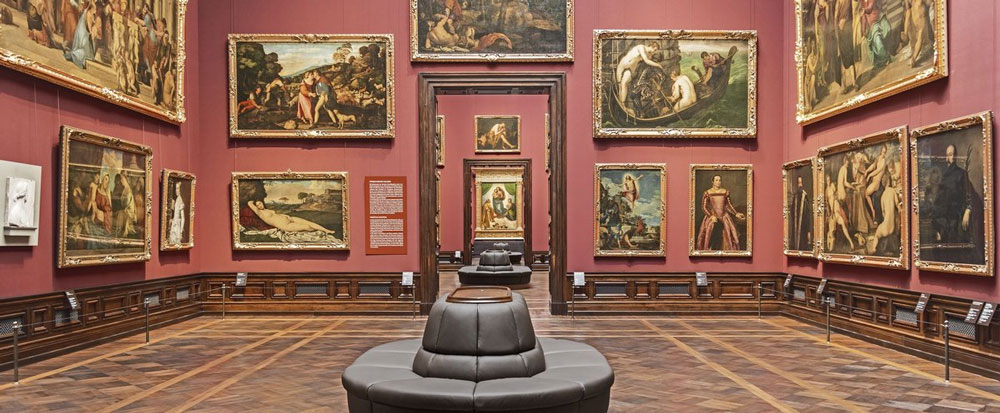
Masterpieces from the Renaissance and Baroque periods by Italian painters such as Raphael, Titian, Giorgione, Correggio, Tintoretto and Guercino are on display
The collection contains a large number of 17th century Flemish and Dutch paintings by Rubens, Rembrandt, Jordaens, Van Dyck and Vermeer. There are also outstanding works by German, French and Spanish painters among the gallery’s attractions.
With 58 paintings by Lucas Cranach the Elder and Lucas Cranach the Younger, the gallery houses the largest collection of Cranach paintings in the world. Also on display are early Renaissance panels and canvases, including the recently restored St. Sebastian by Antonello da Messina.
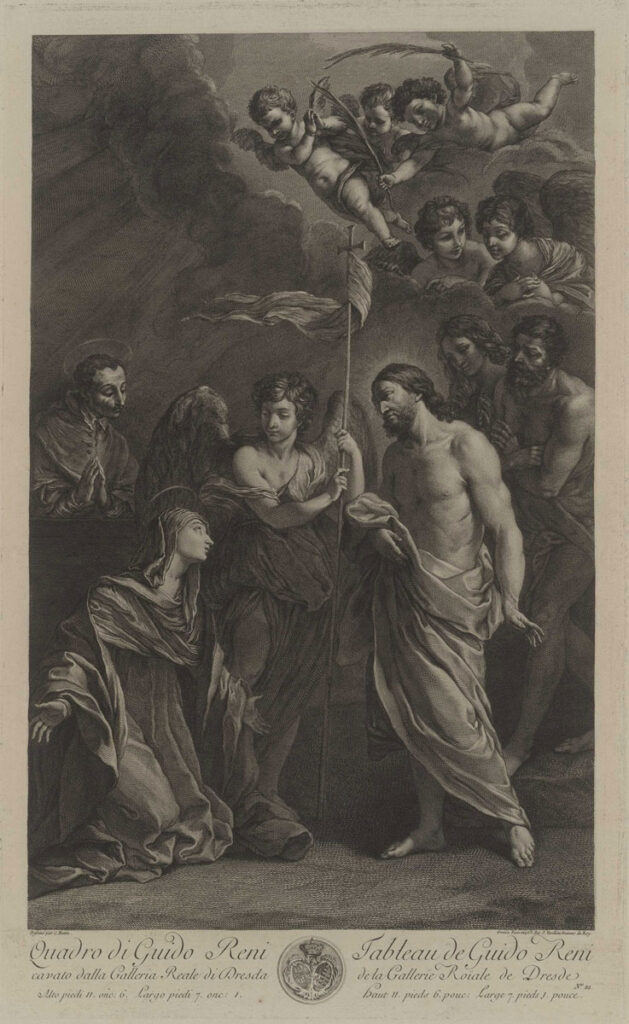
The color of the walls serves to structure the collection. Italian works are displayed in rooms with deep red walls. Dutch and Flemish paintings are displayed on green backgrounds. Spanish and French paintings from the 17th century are displayed on gray walls.
The Gemäldegalerie Alte Meister receives more than 500,000 visitors a year.
3- Herzog Anton Ulrich Museum

The Herzog Anton Ulrich Museum(HAUM) is an art museum located in the German city of Braunschweig, in Lower Saxony.
The museum houses an important collection of ancient Western paintings, and is especially strong in Northern European art from the Renaissance, including works by Cranach (a very strong collection), Holbein, Dürer, Van Dyck, Rubens, and Rembrandt
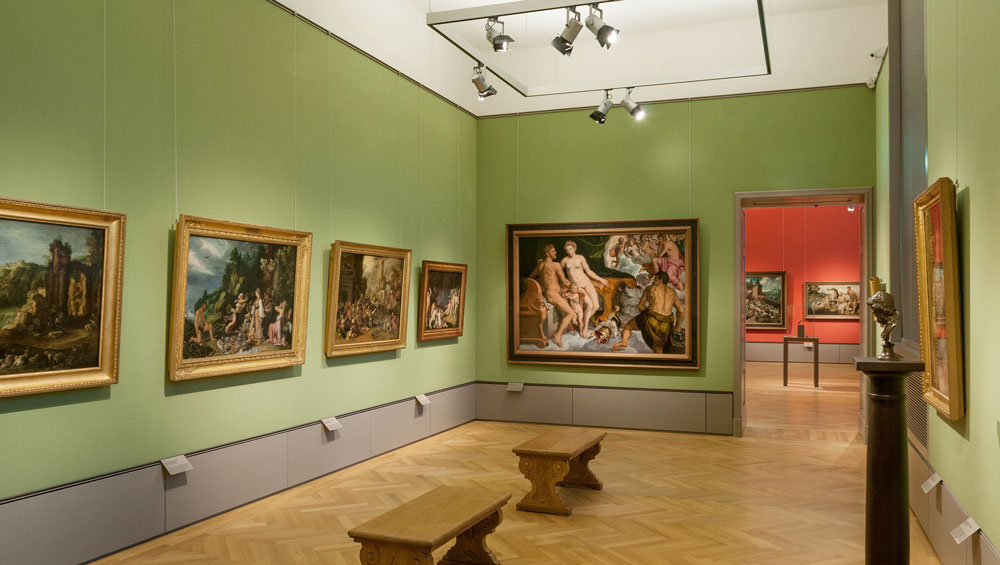
Rarities include a work by Vermeer, Giorgione and Rosso Fiorentino. The museum is based on the Schloss Salzdahlum art collection of Antonio Ulrich, Duke of Brunswick-Lüneburg (1633-1714), after whom it is named. In old catalogs, the term Bilder-Galerie zu Salzthalen refers to this collection.
The print room, with more than 100,000 prints and 10,000 drawings, is of international importance. There are also temporary exhibitions of art from all over the world.
Among the handwritten items is the diary of Matthäus Schwarz, an accountant with a keen interest in fashion who documented his attire throughout his adult life at a time when people who were not of the highest rank were thought to dress blandly. It is the earliest known fashion book.
The museum’s collection of medieval objects is housed in Dankwarderode Castle.
4- Wallraf-Richartz Museum
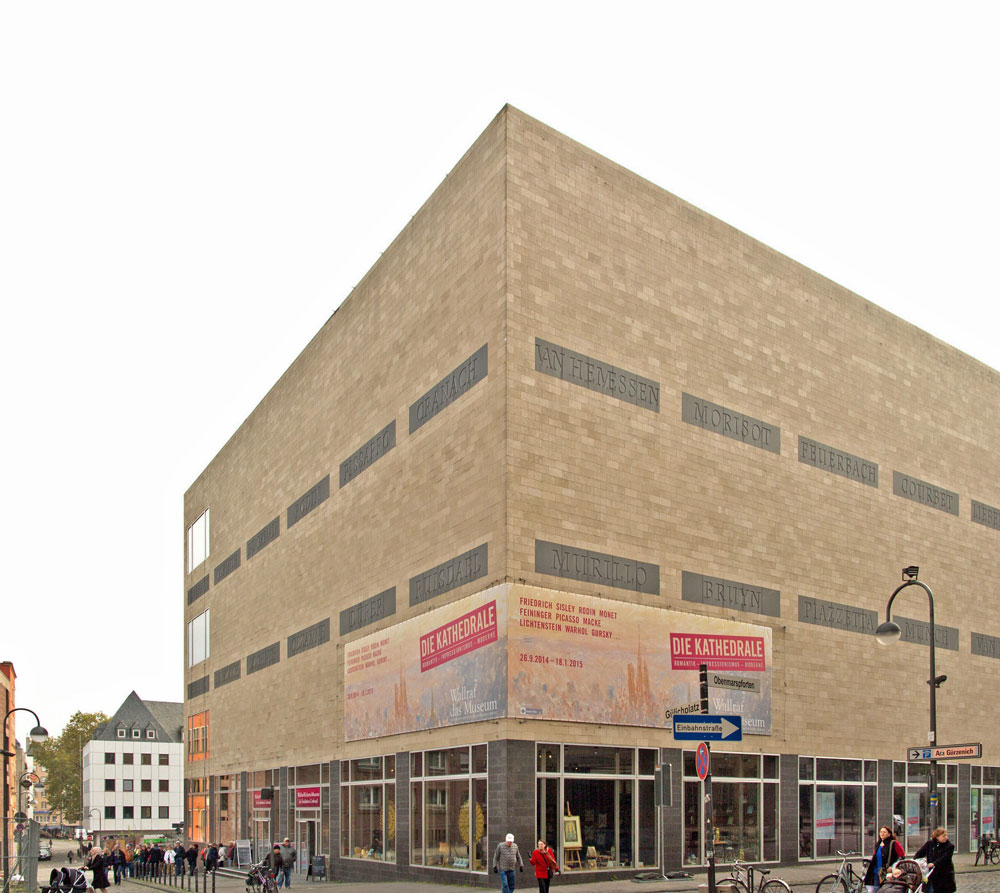
The Wallraf-Richartz Museum (full name in German: Wallraf-Richartz-Museum & Fondation Corboud) is one of the three main museums in Cologne (Germany). It houses an art gallery with a collection of fine art from medieval times to the early 20th century.
The Madonna in the Arbor is one of the Gothic paintings in the collection of the Wallraf-Richartz Museum. It was created by Stefan Lochner, who lived in Germany between 1410 and 1451, working mainly in Cologne. He is considered a late Gothic painter. His work usually has a clean look, combining Gothic attention to long, flowing lines with bright colors and a Flemish influence of realism and attention to detail. This painting is considered typical of his style. It was executed around 1450, and shows the Virgin and Child resting in a blooming rose arbor attended by Lochner’s characteristic infant angels
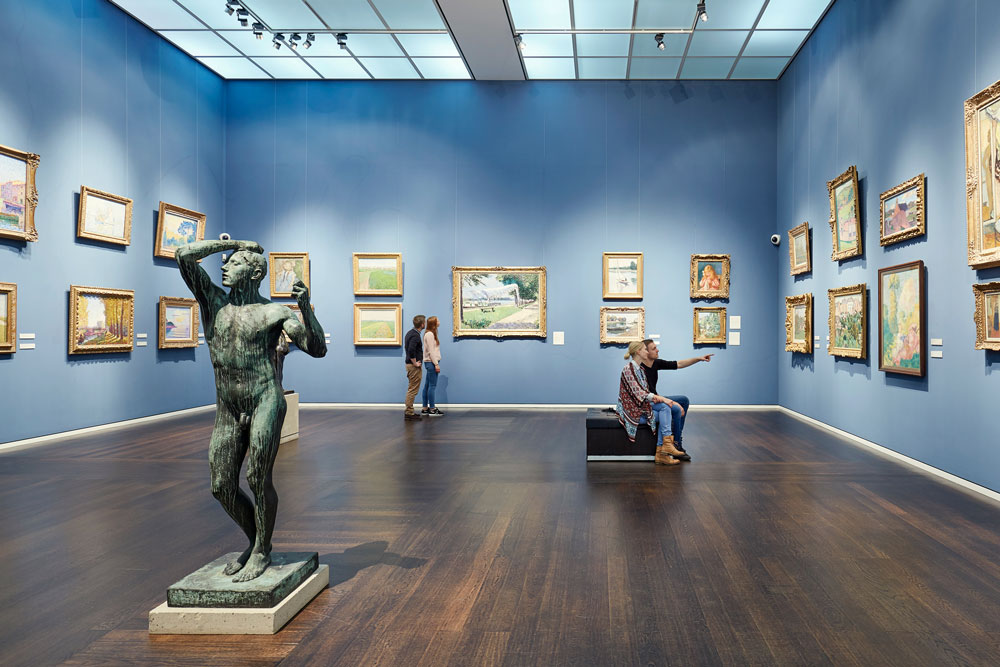
Another outstanding Gothic painting in the Wallraf-Richartz collection is an Arrest of Jesus by the “Master of the Karlsruhe Passion,” the only surviving panel from this painter’s influential Passion cycle that is not preserved in the Staatliche Kunsthalle Karlsruhe.
The Wallraf-Richartz Museum houses an altarpiece (1515) from the Great Church of St. Martin in Cologne, one of the few known works by Jacob van Utrecht. Other early Renaissance works in the collection include Hieronymus Bosch’s Adoration of the Child and a panel from Albrecht Dürer’s Jabach Altarpiece.
Artists in the collection, from Baroque to Rococo, include works by Rubens (Juno and Argus, 1610); Rembrandt (self-portrait); Jordaens; Frans Snyders; van Dyck; Frans Hals; Gerard van Honthorst; Pieter de Hooch; Gerard de Lairesse; François Boucher; Nicolas de Largillierre; Jean-Honoré Fragonard; Marguerite Gérard; and Giambattista Pittoni.
The Wallraf-Richartz collection includes works by the Impressionists Monet, Pissarro, Sisley, Gustave Caillebotte, and Berthe Morisot, whose Child among Staked Roses, or “Kind zwischen Stockrosen,” was painted in 1881.
5- Neues Museum, Berlin

The Neues Museum is a listed building on Museum Island in the historic center of Berlin. Built from 1843 to 1855 by order of King Friedrich Wilhelm IV of Prussia in neoclassical and Renaissance styles, it is considered the main work of Friedrich August Stüler
After suffering damage in World War II and the decline of East Germany, it was restored between 1999 and 2009 by David Chipperfield
Today, the Neues Museum houses the Ägyptisches Museum, the Papyrussammlung, the Museum für Vor- und Frühgeschichte and parts of the Antikensammlung. As part of the Museum Island complex, the museum was inscribed on the UNESCO World Heritage List in 1999 for its outstanding architecture and testimony to the evolution of museums as a cultural phenomenon.
The Neues Museum was the second museum to be built on Museum Island and was conceived as an extension to house collections that could not be housed in the Altes Museum. These included the collections of plaster casts, artifacts from ancient Egypt, the prehistoric and early historical collections (Museum der vaterländischen Altertümer), the ethnographic collection, and the collection of prints and drawings (Kupferstichkabinett). It is thus the “original source” of the collections of the Egyptian Museum Berlin and the Ethnological Museum Berlin.
In addition, the Neues Museum is an important monument in the history of construction and technology. With its various iron constructions, it is the first monumental building in Prussia to systematically apply the new techniques made possible by industrialization
As a further innovation, a steam engine was used for the first time in Berlin in construction. Among other things, it was used to drive piles into the floor of the building. The soft, spongy soil surrounding the Spree River meant that buildings in the central area of Berlin required deep foundations.

It was built between 1843 and 1855 according to plans by Friedrich August Stüler, a pupil of Karl Friedrich Schinkel. The museum was closed at the beginning of World War II in 1939 and was severely damaged during the bombing of Berlin. The reconstruction was supervised by the English architect David Chipperfield. The museum officially reopened in October 2009 and received the 2010 RIBA European Award and the 2011 European Union Prize for Contemporary Architecture.
Exhibits include the Egyptian and Prehistoric and Ancient History collections, as well as pre-war. Among the artifacts it houses is the iconic bust of Egyptian Queen Nefertiti.
Both as part of the Museum Island complex and as an individual building, the museum bears witness to the neoclassical museum architecture of the 19th century. With its new industrialized building procedures and its use of iron construction, the museum plays an important role in the history of technology
Since the classical and ornate interiors of the Glyptothek and the Alte Pinakothek in Munich were destroyed in World War II, the partially destroyed interior of the Neues Museum is one of the last remaining examples in Germany of the interior layout of museums of this era.
Do you know other museums in Germany? Leave us your comments
Have you visited any of the museums on this list? Would you like to tell us about your experience? Leave us your comment and tell us your opinion. Tell us about what aspects of the museum or what works of art have caught your attention and whether or not you recommend visiting the museum
Here are some articles about the best museums in different countries:




